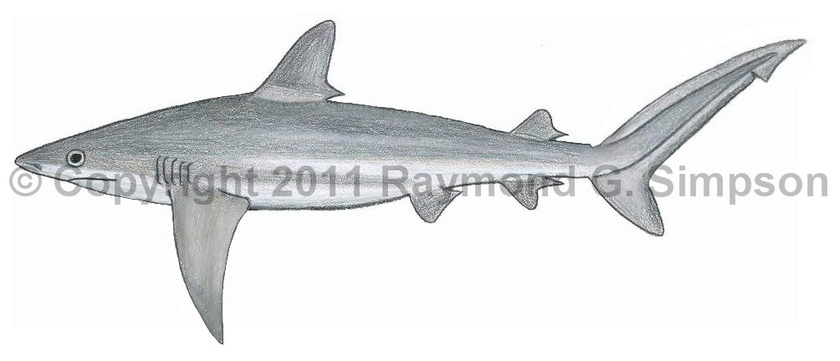
Common Name
Caribbean Reef Shark
Year Described
Poey, 1876
Identification
Anteroposterior tooth rows: 12-13/11-12 on each side; 26-28/25-26 total
Vertebrae: 103-108 precaudal, 208-213 total
A fairly large and stout shark with a short and rounded snout. Eye small. Distance between nostrils 1.0-1.1 times in pre-oral distance. Nasal flaps triangular and low. Upper labial furrows short. Interdorsal ridge is present. Long preanal ridge absent. No keels on caudal peduncle. Gill slits short (2.8-4.0% TL). Teeth in upper jaws broad based and serrated, with thick triangular cusps (mostly oblique except for anterior 2-4 rows). Lower jaw teeth broad-based and serrated, with narrow, erect cusps. First dorsal fin high (10.3-11.3% TL) with a convex anterior margin, a narrow rounded tip, and inserted over inner margin of pectoral fin. Second dorsal fin much smaller (2.9-3.2% TL) and inserted almost directly above anal fin. Both dorsal fins with extended free posterior tips (second dorsal free tip about as high as the second dorsal fin). Anal fin similar in size to second dorsal fin. Pelvic fin origin well behind free tip of first dorsal. Pectoral fin long, thin, and falcate, with a narrow rounded tip.
Color
Gray, gray-brown, to olive above, abruptly whitish or pale yellow below. Undersides of fins dusky.
Size
Mature adults from 152-168cm TL. Newborns from 70-73cm. Maximum size to 295cm TL.
Habitat
Shallow waters to deep reefs and dropoffs to 30m. The most common shark found on coral reefs in the Caribbean. Also found over soft bottoms in non-reef areas.
Range
Southeastern Florida to Venezuela, including all of the Caribbean islands, to S. Brazil. Rare or absent on the continental Caribbean.
References
Castro, J.I. 2011. The Sharks of North America. Oxford University Press, 640 pp.
Compagno, L.J.V. 2002. Sharks. In: Carpenter, K.E. (Editor) FAO Identification Guide for Fishery Purposes. The Living Marine Resources of The Western Central Atlantic. Volume 1: Introduction, mollusks, crustaceans, hagfishes, sharks, batoid fishes, and chimaeras. ASIH Special Publication No. 5. FAO, Rome.
Compagno, L., M. Dando, and S. Fowler. 2005. Sharks of the World. Princeton University Press, 480 pp.